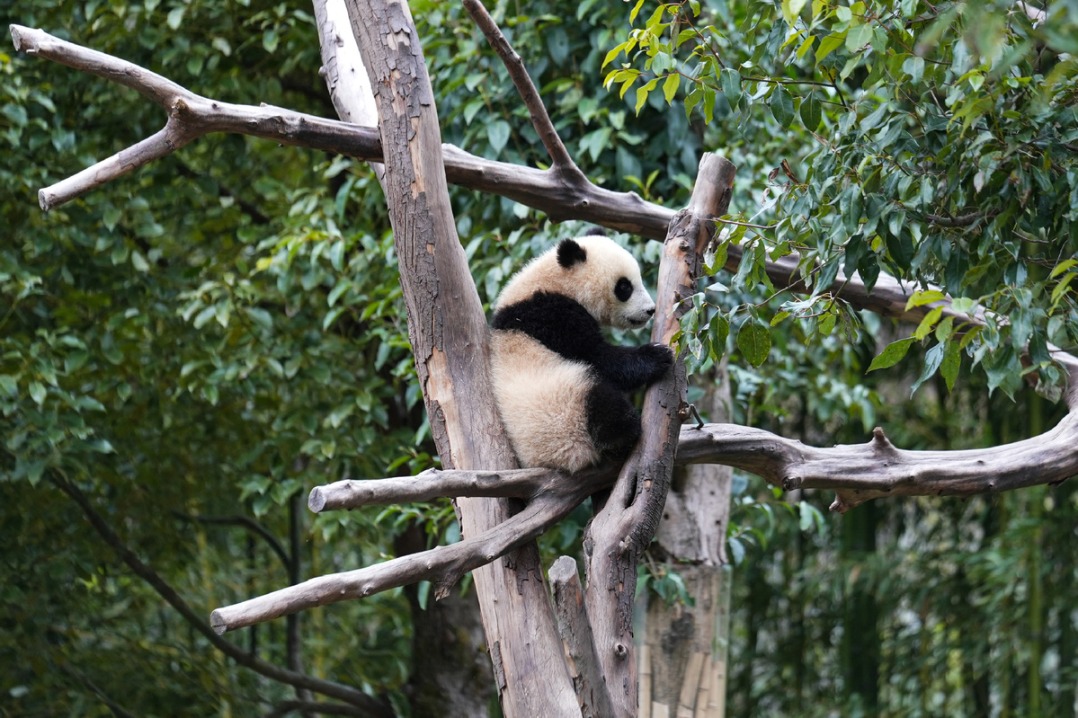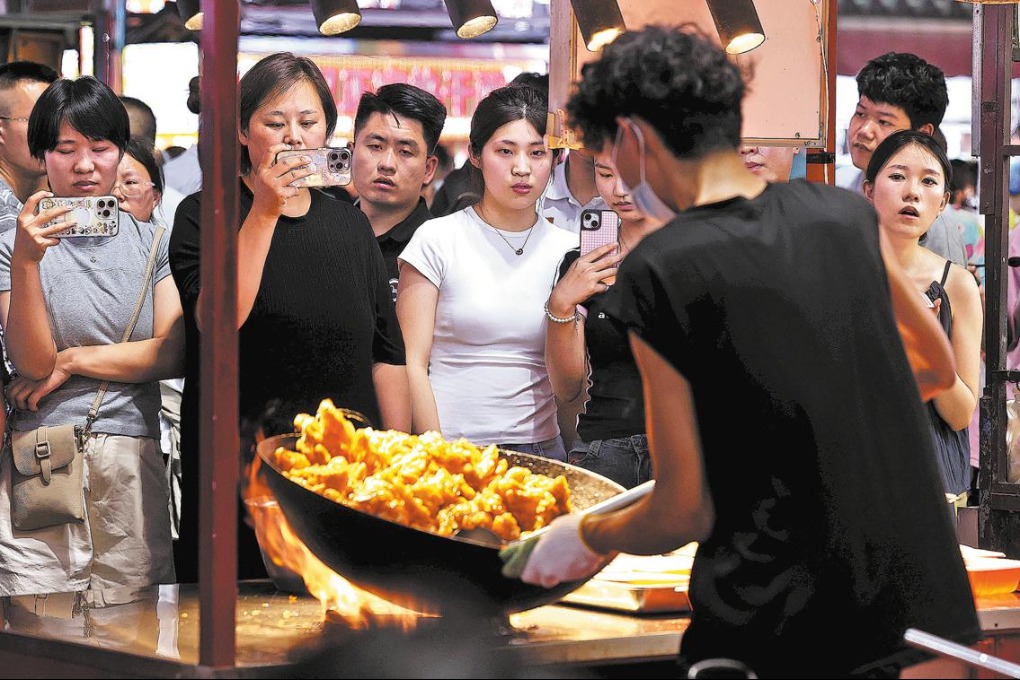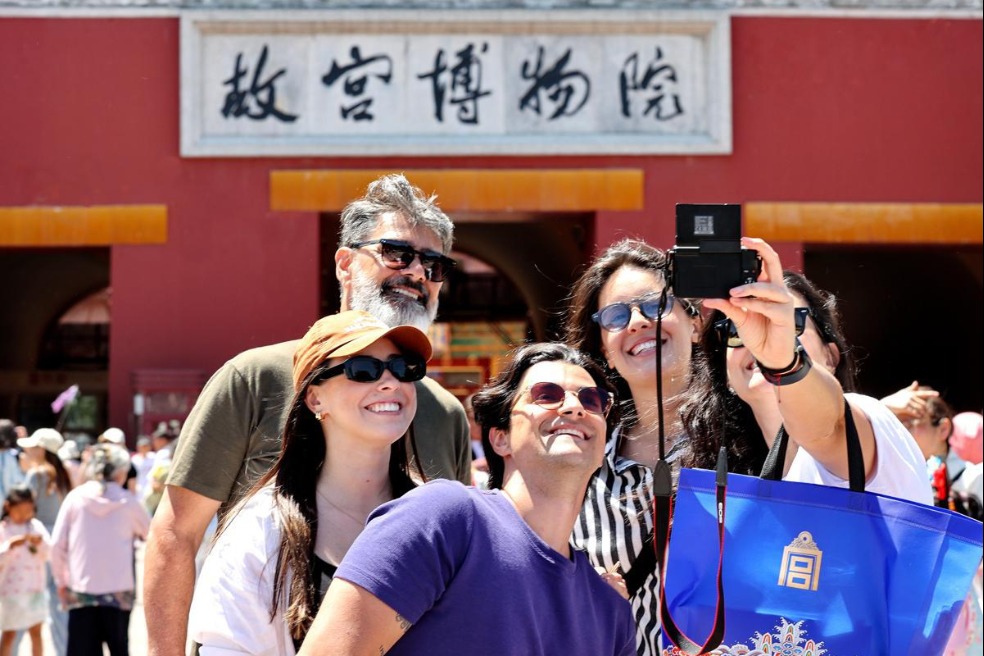Flowering of the chives

Editor's Note: China is divided into as many culinary regions as there are different ethnic groups. Its geographical diversity and kaleidoscopic cultural profiles contribute to the unending banquet of flavors.
Out in the vast Inner Mongolian grasslands, the weather is getting cooler by the day. The grass is lush and the herbs are sprouting virtually overnight, it seems. The flowering season is exuberant as plants try to set seed before the winter winds arrive.
Among the yellowing green are patches of tiny white flowers with pretty heads. These are flowering chives, a natural grassland herb.
As soon as they appear, they are eagerly gathered. Young Mongolian girls will pluck the flower heads before they fully blossom and, when their buckets are full, they carry them back to the yurts.

| The chive flower, when made into sauce, slowly develops a subtle pungency that flirts with the taste buds. Bao Donghai / For China Daily and Provided to China Daily |
It is an important annual ritual.
Back in the yurts, the flower heads are washed, rinsed and shaken dry before being finely ground up. Mashed flowers will be mixed with salt and a bit of Chinese liqueur, and then lovingly bottled. A week or two later, they are ready.
This is the famous flowering chives paste, the perfect seasoning for lamb hotpot.
It is a natural pesto and it has been made since as far back as the Spring and Autumn Period (770-476 BC).
Lamb and bundles of chives were already recorded as sacrificial items at that time. In fact, flowering chives have been lauded in song and prose by ancient poets, and there is a famous calligraphy sampler created in the 10th century named after the plant. It is used for calligraphy practice to this day.
Why the fascination with a simple herb? The answer lies in its unique flavor.
Fresh chives are used often enough in both Western and Asian cuisine, mainly as a garnish, much like spring onions or coriander leaves. Chinese garlic chives, slightly larger than the Western variety, are more robust in both looks and aroma.
The chive flower, once made into sauce, slowly develops a subtle pungency that flirts with the taste buds. It is a flavor that grows on the palate, complimenting the full-bodied scent of lamb with its own unmistakable signature.
It is a scent that cannot be contained, as I found out when I tried to take a bottle from Beijing to Singapore. I'm probably the reason why flowering chives join durian as one of the forbidden foods on airplanes.
My bottle of pesto had been made by my husband's Manchurian uncle, whose mission in life is to make us eat more lamb. Come autumn, every visit to his house would feature a feast of mutton hotpot, and he would give us a lesson on how to choose the best cuts of lamb and, of course, he would extol the merits of the flowering chives pesto.
It is not just in far northern China that the flowering chives are popular. In Qujing, a city in the southwestern province of Yunnan, there is a famous preserve that is made locally that features chive flowers, rutabaga and local chili peppers.
Chive flowers are harvested and then laid out in the sun to dry. Rutabaga stems are peeled and then sliced into thin strips. These are also dried in the sun, along with the red chili peppers.
The shredded vegetables are then mixed with sugar, salt and Chinese white spirits before they are stuffed into pickle urns for a slow fermentation.
By the time winter comes around in a few months, a delicious pickle is ready. Yunnan palates love strong flavors, and the pungency of the chives, the crunch of rutabaga and the heat of the peppers make this a favorite relish on the dining table.
Back in the cooler northern regions, the more simple sauce of ground-up flowering chives and salt is ready to eat just days after preparation. Instead of mellowing, the fermentation process encourages the chive aromas to bloom, developing stronger flavors. It's a crucial ingredient in mutton hotpot.
Normally, diners mix their own dipping sauce from a medley of ingredients. These include red fermented bean curd, or jiangdoufu, diluted sesame paste, chili oil, the all important jiucaihua or flowering chives, chopped coriander leaves and sugar.
It is a full-flavored mix with the fermented bean curd building the foundation of savoriness, the flowering chives adding a strong flavor profile and the sesame paste providing a mellowness.
In Beijing, bottled flowering chives can be bought from Liubiju, the old house of pickles made famous on food television by Anthony Bourdain when he visited the Forbidden City.
In modern culinary circles, there has been much talk about food that goes from field to table. The Chinese, however, know no other way to eat.
paulined@chinadaily.com.cn
Make your own flowering chives pesto sauce
500 g flowering chives
1/2 cup Chinese white spirits or baijiu
2 tablespoons salt
This is the season for flowering chives, but the best bunches have flowers that are not in full bloom. You need to wash them immediately when you get back to the kitchen, partly to rehydrate them.
Chop the chives into 3-4 cm lengths.
Next, take out a blender and place the chives inside, along with the salt and baijiu. Blend to a rough paste to break up the fibers.
Scoop the mixture into sterilized jars and seal. Store in a cool dark place, or put into the back of the refrigerator. The pesto is ready after a week.
Mutton hotpot
1 kg lamb, shaved into thin slices
1 whole Chinese or Napa cabbage, cut up
100 g wood-ear mushrooms, soaked and trimmed
1 radish, peeled and sliced
1 Chinese pear, peeled, cored and sliced
Chinese greens - chrysanthemum leaves, spinach, mustard greens
Fresh noodles, glass noodles
SAUCES
Flowering chives pesto Fermented Chinese red bean curd, mashed to a paste Sesame paste, diluted with a little hot water
Chili oil
Hoisin sauce
Chopped coriander leaves Toasted sesame seeds
Allow the water in the hotpot to heat. Drop in the radishes, wood ear mushrooms and harder cabbage stems to cook. Add the Chinese pear slices. The pear is to banish the pungency of the lamb, while the vegetables help flavor the soup.
Mix up your bowl of dip from the sauce ingredients.
Cook as much meat as you can eat in one serving. When the meat is ready, drop it into your bowl of sauce. After the meat is half demolished, you can think about cooking the vegetables in the now savory stock.
Normally, Beijingers finish the meal by dropping noodles into the simmering stock and slurping up both noodles and soup.
(China Daily European Weekly 09/15/2017 page19)
Today's Top News
- China's railways hit record 2.24 billion passenger trips in H1
- Collection of Xi's articles on education, other two books published in Hong Kong
- Local govts urged to improve handling of hot spot issues
- China hailed as stabilizing global force
- BRICS currency creates dilemma for the dollar
- Climate not a contest for China, US






























